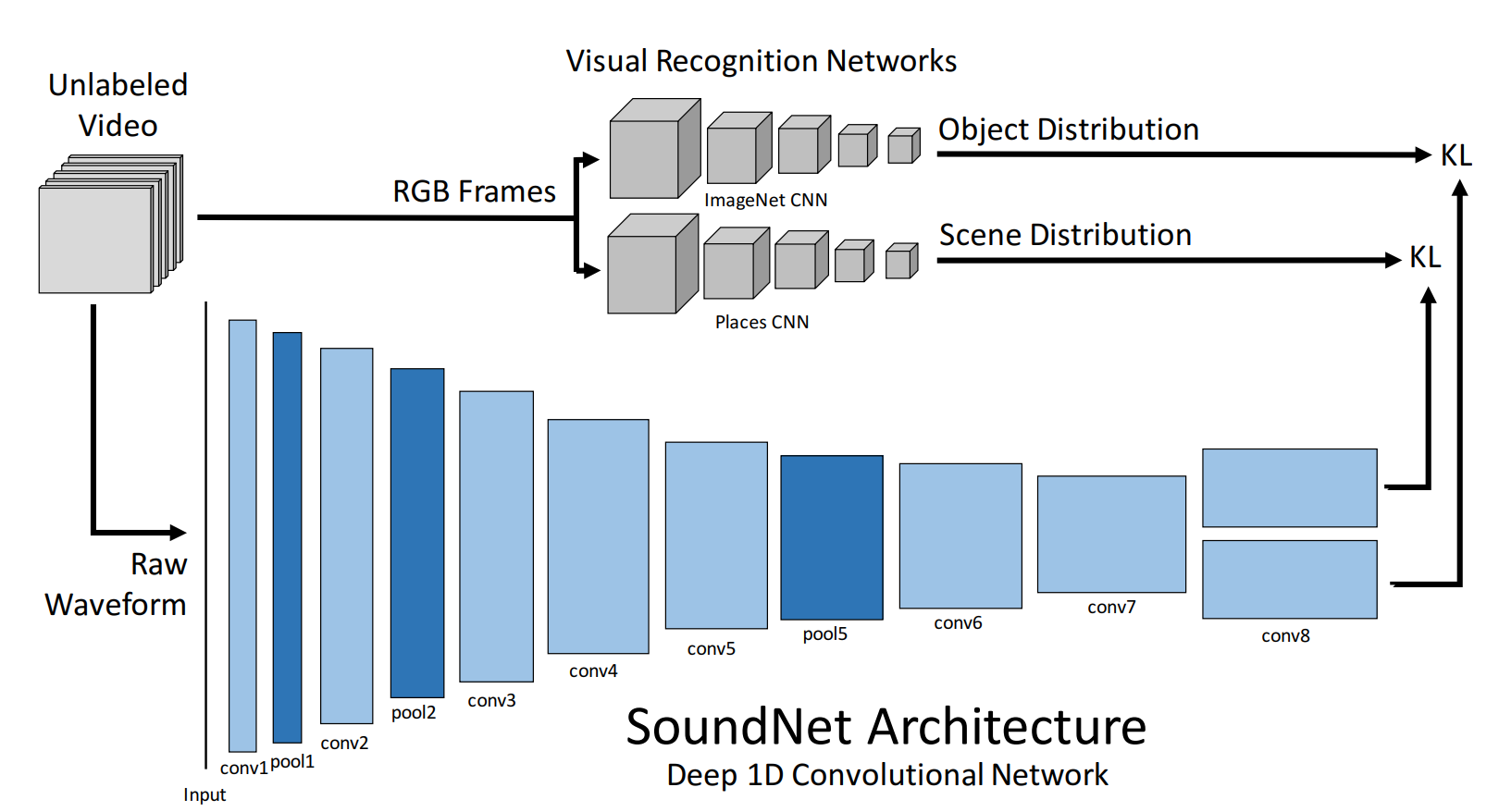SoundNet is a CNN designed trained in an unsupervised manner for audio feature represenations. It was intialliy implemented in torch, popularized through TF. This is an attempt to make a solid usable repo with a PyTorch port from other repos.
The model is defined in soundnet.py. As we can see the current version only returns conv7, y_obj, and y_scns features from the model. These can be modified to extract any feature from the CNN in the forward function.
This code requires PyTorch to run. You can install following the instructions in their website, or if you are using conda the command is the following:
conda install pytorch torchvision torchaudio cudatoolkit=11.3 -c pytorch
To extract the features first you need to have the audio in the following format as it is specified in the original paper:
- Format: MP3
- Sample Rate: 22050 Hz
- Channels: 1 (mono)
To extract the audio from a folder with .mp4 videos you can use ffmpeg as follows:
for file in videos/*;do filename=$(basename $file .mp4); ffmpeg -y -i $file -ac 1 -f mp3 -ar 22050 mp3/${filename}.mp3; done
Then you can run the extract features script after creating the target directory. In this case we have named it ./soundnet/raw, but we recommend placing it next to the rest of your data.
python3 -u extract_feats.py -m models/sound8.npy -i ./mp3 -o ./soundnet/raw -f .mp3
This script extracts the conv7, y_obj, and y_scns features from the model and stores it in .npy format in a separate file per sample.
At this point, SoundNet has extracted a sequence of feature vectors. A naive way to represent the audio with a single vector is to obtain the mean feature vector from the sequence. You can obtain such represenation by running the get_avg_pool.py scirpt for the y_scns features as follows:
python3 -u get_avg_pool.py -i ./soundnet/raw -o ./soundnet/avg_pooling/y_scns -f y_scns
